Text
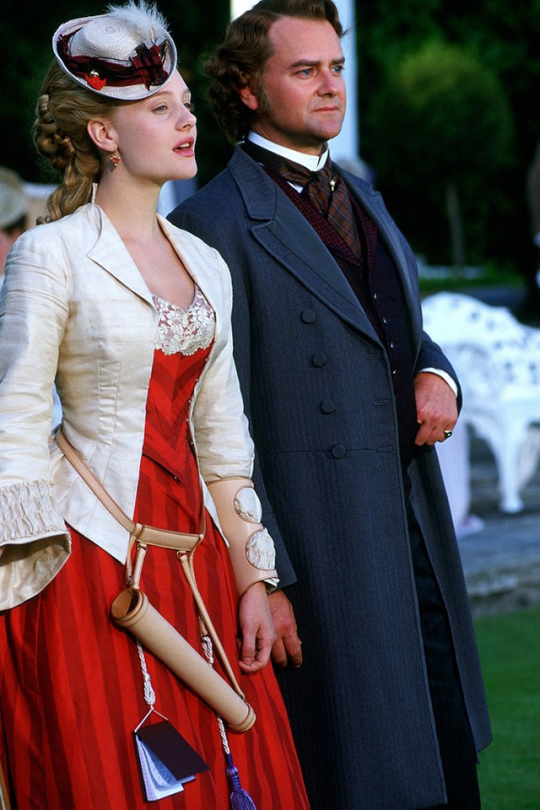


This striped bustle dress in startling red first made a splash in 2002 on Romola Garai as husband-hunting Gwendolen Harleth in Daniel Deronda.
A full 22 years later, it turned up again on newly empowered, if somewhat troublesomely married, Clara Trenchard, played by Harriet Slater in 2024’s Belgravia—The Next Chapter.
Costume Credit: carsNcors
Follow: Website | Twitter | Facebook | Pinterest | Instagram
356 notes
·
View notes
Text

i know this is coming from a place of like intense sexual objectification and homophobia and racism not to mention the world ending efforts of big oil but unfortunately it is so funny
94K notes
·
View notes
Text

A Cycladic figure from ca. 2500–2400/2300 B.C.E. with no torso, its crossed arms are just below the chin.
Credit…Amir Hamja/The New York Times
50 notes
·
View notes
Photo

The San Francisco Examiner, California, February 25, 1935
144K notes
·
View notes
Text
By Luke Gentile
The FBI announced last week its recovery of at least 22 historical artifacts taken after the American victory at the Battle of Okinawa in World War II.
A deal to return the artifacts to the Government of Japan, Okinawa Prefecture, was arranged via the FBI, and a repatriation ceremony will be held after the artifacts return for the first time in nearly eight decades, according to a release from the FBI Boston Division.
Several artifacts date back to the 18th and 19th centuries and hold a place in the long history of Okinawa, including portraits, a hand-drawn map, pottery, and ceramics, the release noted.
“It’s incredibly gratifying when the FBI is able to recover precious cultural property that has been missing for almost 80 years,” Jodi Cohen, the special agent in charge of the FBI Boston Division, said.
“This case highlights the important role the public plays in recognizing and reporting possible stolen art. We’d like to thank the family from Massachusetts who did the right thing in reaching out to us and relinquishing these treasures so we could return them to the people of Okinawa,” Cohen said.
Multiple artifacts now returning to Okinawa were registered with the FBI’s National Stolen Art File in 2001 by the Okinawa Prefectural Board of Education, according to the release.
In 2023, the family of a late World War II veteran (who did not serve in the Pacific) discovered some of the valuable Asian art while they went through his personal items, and they found at least four of the works in the National Stolen Art File, according to the FBI.
“It’s an exciting moment when you watch the scrolls unfurl in front of you and you just witness history, and you witness something that hasn’t been seen by many people in a very long time,” Geoffrey Kelly, an FBI Boston special agent and Art Crime Team member, said.
“These artifacts are culturally significant, they’re important pieces of Japan’s identity. These were especially important because they were portraits of Okinawan kings dating back to the 18th, 19th centuries. This case really illustrates part of the work we do on the Art Crime Team. It’s not always about prosecutions and putting someone in jail. A lot of what we do is making sure stolen property gets back to its rightful owners even if it’s many generations down the road,” Kelly said.
Assisting the FBI in the return of the items was the Smithsonian Institute’s National Museum of Asian Art, according to the release.
“The FBI reached out, asked us for some help making sure they knew how to care for the works and that they had a safe place to store them while they worked out the repatriation details. It’s an honor to be able to help the works go back to their home,” Danielle Bennett, the head of collections management at the National Museum of Asian Art at the Smithsonian Institute, said.
You can see all of the recovered artifacts here.
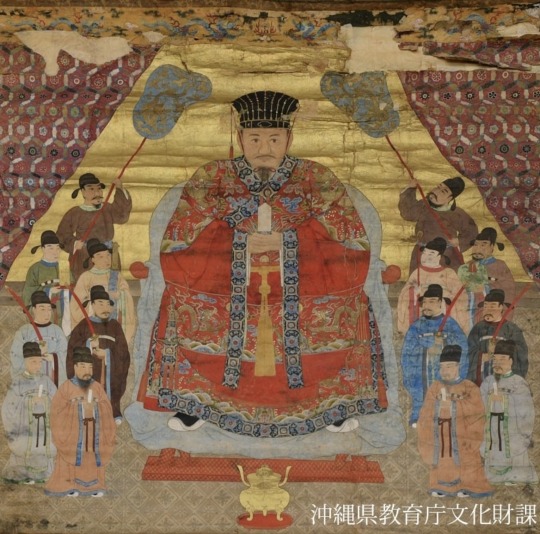
55 notes
·
View notes
Text
Mycenaeans Book Review
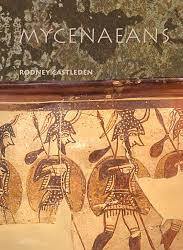
I just finished reading Mycenaeans by Rodney Castleden, and I would like to share my thoughts with you.
What is this book about? It describes how the Mycenaeans lived and how their civilization influenced the classical Greeks that came after them.
What do I like about this book? I like how each chapter focused on a different topic about the Mycenaean civilization and provided basic information about Bronze Age Greece.
What do I dislike about this book? I had one major issue with this book: the author focused on Homer's interpretation of Mycenaean Greece to an obsessive amount. Homer lived five hundred years after the Mycenaean civilization collapsed. Yes, Homer had access to documents that haven't withstood the passage of time, but the Mycenaean world varied drastically from the one in which he lived. Even the mindset and worldview had changed. In all fairness, the author did point out a few anachronisms, but not as many as he should have.
What do I rate this book? I rate this book a three out of five stars.
Would I recommend this book? Yes (hesitantly).
Why would I recommend this book? I would recommend this book because it provides a good introductory look into Mycenaean life. But keep in mind that the author relies heavily on Homer.
To whom would I recommend this book? I would recommend this to anyone who has read or is planing to read The Iliad and The Odyssey by Homer.
Well, that's all I have for today. Until next time, take care and stay curious.
3 notes
·
View notes
Text


Genuinely in love with the groovy kitty floor…
36K notes
·
View notes
Text
Someone in my fb chicken group has a little bearded bantam that likes to sit on shoulders so they did a pirate photoshoot and I am losing it

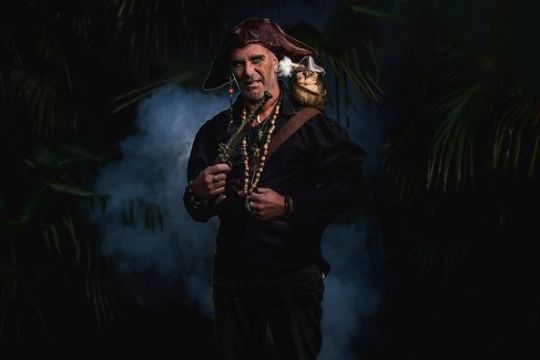
Just look at it!! THE LITTLE HAT!!!
39K notes
·
View notes
Text
economists really took the divine right of kings and turned it into billionaire CEOs
112K notes
·
View notes
Text
Jade mask depicting Maya storm god unearthed in royal tomb in Guatemala
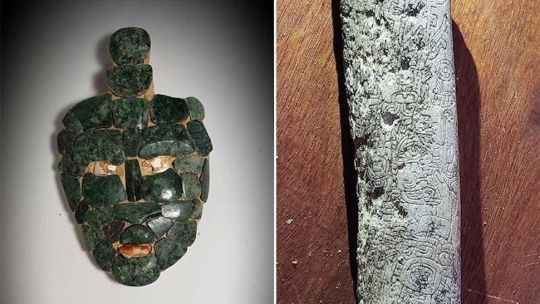
Archaeologists have discovered a 1,700-year-old royal tomb in Guatemala that's overflowing with funeral offerings, including an intricately designed jade mask depicting a Maya deity.
The tomb, which is located at an archaeological site known as Chochkitam near the borders of what are now Mexico and Belize, was the burial site for a previously unknown Maya king, according to a statement from Tulane University.
Along with the mosaic mask designed to resemble the Maya storm god, researchers found 16 mollusk shells and hieroglyphs carved into human femurs (thigh bones), including one drawing depicting a man holding a jade mask similar to the artifact tucked inside the tomb. Researchers think the hieroglyphs identify the king's father and grandfather and serve as a link to the ruler of the Maya states of Tikal and Teotihuacan. Read more.
309 notes
·
View notes
Text
45,000-year-old bones unearthed in cave are oldest modern-human remains in Central Europe

Modern humans crossed the Alps into chilly Northern Europe about 45,000 years ago, meaning they may have coexisted with Neanderthals in Europe for thousands of years longer than experts previously thought, according to new research.
The discovery — of 13 bone fragments belonging to Homo sapiens who occupied a cave in Germany between about 44,000 and 47,500 years ago — catalogs the oldest known H. sapiens remains from Central and Northwest Europe, the researchers said. The finding also surprised the team because, as they found, the climate in the region was frigid at that time.
"This shows that even these earlier groups of Homo sapiens dispersing across Eurasia already had some capacity to adapt to such harsh climatic conditions," Read more.
343 notes
·
View notes





